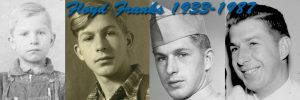“A Question of Faith” opens doors for youth performers while changing lives

Karen Valero (fourth from right) stops on the red carpet at the Los Angeles premiere of “A Question of Faith” with fellow cast members, from left, Donna Biscoe, T.C Stallings, Kim Fields, Richard T Jones, Mara Hall, Amber Thompson, Renee O’Connor, Marliss Amiea, and James Hooper. (Photo: Silver Lining Entertainment/Erik Fischer )

Karen Valero (right) and Jaci Velasquez portray daughter and mother in the new film “A Question of Faith.” (Photo: Silver Lining Entertainment)
I recently visited with singer/actress Amber Nelon Thompson at the National Quartet Convention as she enthusiastically described her experience filming her role as “Michelle Danielson” for the new film “A Question of Faith.”
Thompson received the opportunity after her mother Kelly Nelon Clark of the Gospel artiists the Nelons, who went to an acting audition and noticed the role of a teen singer among the roles being cast. Signed to her own record deal, Amber fit the bill and soon found herself cast.
She was so excited by the experience and attending the premieres. She shared with me the experience of coming to know another young actress Karen Valero who portrayed another one of the main youth roles.
Members of the amazing ensemble cast includes Richard T. Jones, Kim Fields and C. Thomas Howell in the film from Pure Flix and Silver Lining Entertainment opened in theaters around the country Sept. 29 and combined premieres in Atlanta where it was filmed, Los Angeles and a private screening at the Capitol in Washington, D.C.
“We had over 3000 people show up at the Atlanta premiere. Wow it was fantastic!” Valero said. “This movie has changed my life, I’ve heard people telling me about their personal life and how inspired they are to become a better person after seeing the film.”
Valero, who lives in Atlanta, was born in Caracas, Venezuela coming to America at 15. She soon found that her loves of theatre, photography, and visual arts complimented her interest in acting. For her modeling jobs led to appearing in commercials, which then turned into film auditions.
In “A Question of Faith” Valero portrays “Maria Hernandez.” She said the film tells the story of three families that find themselves at a crossroads and questioning their faith.
“Each family member deals with their issues, their worlds start to intertwine,” she said. “It was such an honor to work with this talented group of actors.”
Multi-million selling Grammy ® nominee Jaci Velasquez appears in the film as her mother “Kate Hernandez.”
“Karen is a natural, she was a delight to work with,” Velasquez said. “Working with Karen is a true pleasure, she’s super easy going and discovers new things in the character she is playing and brings it to screen in a beautiful way.”
Valero describes her character as a free-spirited teenager who works with her mom at a restaurant.
“She owns delivering restaurant orders, but Maria can’t stop texting and driving and doesn’t want to listen to her Mom, as she strives to be the first one in their family to attend college,” she said. “However, her choices change not only her life, but all those involved within the story.
“Playing Maria made me realize receiving this role for me was a sign from God,” she said. “My life has changed and I’ve been closer to God more than ever.”
She said this was never more evident to her that while playing the jail and court scenes faced by Maria.
“It made me feel like I lost everything and I would never like this to happen to me or anyone else in real life so I’ve learned a lesson to never, never text and drive,” she said. “Which is something I did do before being cast. I hope and pray that those who see this film change their habits as I have.”
For more information about Karen Valero, visit http://www.karenvalero.com/ and Amber Nelon Thompson at www.thenelons.com.
Visit A Question of Faith movie website at http://aquestionoffaith.com and follow A Question of Faith movie on Facebook and Twitter and follow the conversation at #AQuestionOfFaith.

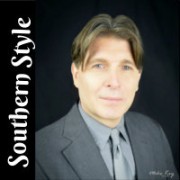
 Judd shares her harrowing personal experience with the severe depression that almost killed her. That ride to success came to a screeching halt when Naomi was diagnosed with Hepatitis C and given only three years to live. Instead of accepting her fate, the former registered nurse educated herself and pursued healing. Today, Naomi is Hep C-free––a medically documented miracle.
Judd shares her harrowing personal experience with the severe depression that almost killed her. That ride to success came to a screeching halt when Naomi was diagnosed with Hepatitis C and given only three years to live. Instead of accepting her fate, the former registered nurse educated herself and pursued healing. Today, Naomi is Hep C-free––a medically documented miracle.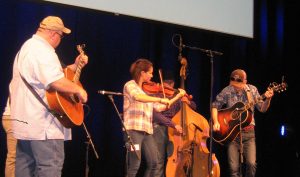
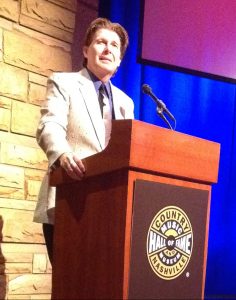
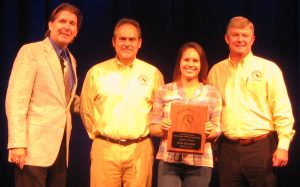
 Legendary rockabilly and country music pioneer Wanda Jackson will see her new autobiography Every Night Is Saturday Night: A Country Girl’s Journey to the Rock & Roll Hall of Fame released by BMG on Nov. 14.
Legendary rockabilly and country music pioneer Wanda Jackson will see her new autobiography Every Night Is Saturday Night: A Country Girl’s Journey to the Rock & Roll Hall of Fame released by BMG on Nov. 14. “I count it a privilege to be in a position to brighten a veteran’s day or help unite the country after a tragedy like 9-11 and I am honored to be named as a Daily Point of Light by our beloved president, George H.W. Bush,” he said. “Knowing that this award is the largest organization dedicated to volunteer service, I consider this to be one of my most prestigious honors.”
“I count it a privilege to be in a position to brighten a veteran’s day or help unite the country after a tragedy like 9-11 and I am honored to be named as a Daily Point of Light by our beloved president, George H.W. Bush,” he said. “Knowing that this award is the largest organization dedicated to volunteer service, I consider this to be one of my most prestigious honors.” Featuring Mullins alongside bluegrass veterans Mike Terry (mandolin), Jason Barie (fiddle), Randy Barnes (bass), and Duane Sparks (guitar), The Story We Tell showcases the band’s most inventive and innovative arrangements to date, both vocally and instrumentally on 12 tracks. With an approach to the music that rings with authenticity, the band secures a rightful place among the traditional guard of bluegrass while standing comfortably shoulder to shoulder with more progressive type artists who find themselves drawn to not only JMRR’s music, but their down-home, likable nature.
Featuring Mullins alongside bluegrass veterans Mike Terry (mandolin), Jason Barie (fiddle), Randy Barnes (bass), and Duane Sparks (guitar), The Story We Tell showcases the band’s most inventive and innovative arrangements to date, both vocally and instrumentally on 12 tracks. With an approach to the music that rings with authenticity, the band secures a rightful place among the traditional guard of bluegrass while standing comfortably shoulder to shoulder with more progressive type artists who find themselves drawn to not only JMRR’s music, but their down-home, likable nature.